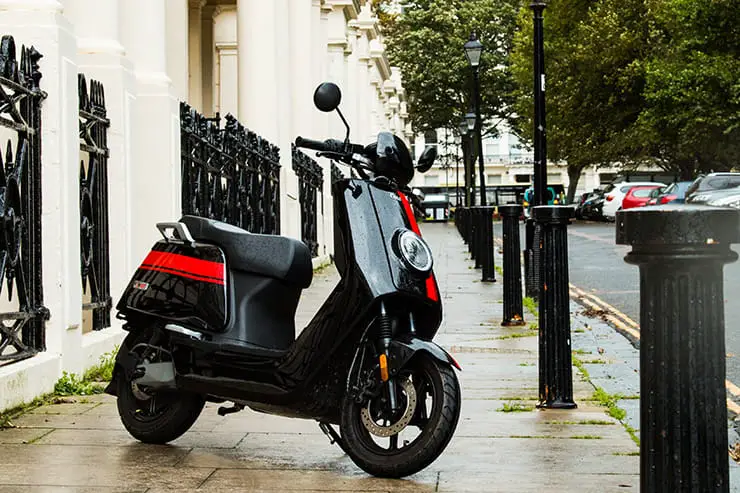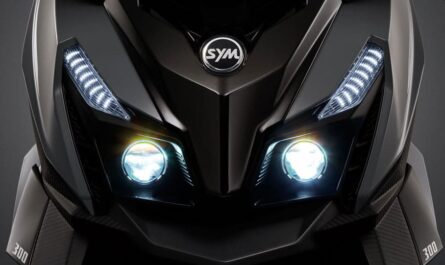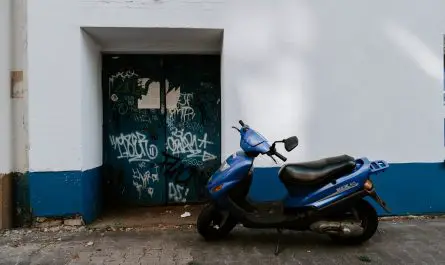It can be very frustrating to get ready and get your scooter out for the first outing of the season, only to find that it only works if the choke is fully engaged.
It seemed to be working well last summer, however, right? Problems like this don't just happen when your motorcycle has been idle for a while. They can also come on quite suddenly and the main reason is as follows:
- Blockage of pilot jets
So what to do with a scooter that only works with the choke?
The main cause is: Blockage of pilot jets
Nine times out of ten, the cause is obstruction of pilot jets. The pilot jets are responsible for feeding the carburetors at idle and during the first phase of acceleration, that is, when you step on the accelerator for the first time. Therefore, if these jets are clogged even a tiny bit, it will prevent fuel from entering the carburetors sufficiently. to keep the scooter at idle.
Opening the choke sends fuel to the carburetors to keep the engine running. But, if you've ever had this problem, you know that it is not possible to ride with a full choke. The mixture is far, far too rich, the engine revs far too high, and it is almost impossible to ride the motorcycle for any significant distance.
List of essential advice during repair:
To repair your scooter without a problem, here is a list of tips that you should follow:
Tip # 1: Label Your Pipes
When you take out the gas tank, you need to know which hose goes where when you put it back up. By simply labeling the pipes with duct tape, you no longer have to scratch your head wondering where they are going. You can number each pipe and place a number on the part where the pipe attaches. You can also use a color coding system and use a marker to mark the location of the pipes. Whichever you choose, these labels will save your life.
Adhesive tape available on Amazon
Tip # 2: keep track of screws, clamps, and brackets
Before you remove anything, note where it came from and what screws are holding it together. Take pictures of the process on your cell phone. Store all screws, bolts, and brackets in a container away from the work area to prevent them from being accidentally stepped on, knocked over or knocked over. It is very useful to use separate small containers for the different sections of the bike. Again, use the labeling system so you don't forget where the screws go.
Another trick is to take a piece of thin cardboard or heavy paper and trace the pattern of the screws on the paper. When you remove a screw from your carcasses, pass it through the paper; it's kind of like a map of where everything is going. This is a perfect tip for those of us who have trouble remembering the location of a particular screw.
Magnetic bowls are also very useful for this kind of work. You should have a bowl for each carburetor you are working on to avoid mixing up jets and screws.
Magnetic bowl: Useful for storing the screws of your scooter
Tip # 3: Be gentle with the jet screws
Brass is a very soft metal. It's easier than you might think to tear off the screw heads. They are also quite small and require a small screwdriver head. So when you remove the pilot jet screws, the smallest in the set, make sure your screwdriver is properly seated in the groove before you start turning. Turn firmly, while pressing down on the screw. Do not rush. When you hear a click, the gasket is broken and the screw should be removed without a problem.
Screwdriver: 26-piece set for all types of screws
How to repair your scooter:
Let's start with the easiest to the most complicated solution. There is no need to rebuild your carburetors if you don't have to.
Step 1: Run meerschaum through the system
The first solution, quick and easy (hopefully), is to run the treatment to remove the impurities in the carburetors. This sometimes works if the jets are not clogged. Note: If you have a fuel injection system, this is a good way to clean the injectors.
- Remove the fuel line from the tank. The one that powers the carburetors.
- Empty the float bowls of all fuel.
- Using a funnel, pour a small amount of sea foam down the fuel line to allow the float bowls to refill.
- Start your scooter and continue to pour about 1/4 to 1/3 can of Sea Foam into the funnel as it rolls.
When your engine has burned out all of the Sea Foam, it will shut down. Reconnect the fuel line to the tank and let your motorcycle sit for 10 to 15 minutes. Then start it normally and see if it works now without the choke wide open and without making an explosive noise. You will need to open the choke to make it work again.
What you will need:
- Sea Foam Motor Tune: Product that dissolves gum and varnish deposits or internal engine contaminants
- Funnel: To be able to pour the product
Step 2: Clean the carburetors
The main task or goal when rebuilding or cleaning a carburetor is to remove the jets and clean them individually using a carburetor cleaner and compressed air. You will also clean the inside of the carburetors and float bowls, as well as any in-line fuel filters.
We recommend purchasing a carburetor rebuild kit for your make and model of scooter if you feel the jets or needles cannot be cleaned. These kits cost around $ 50 for a two-cylinder engine and $ 100 for a four-cylinder engine. It's a good investment and often fixes any carburetor issues you are having. Even those you never knew existed.
Another argument for buying a rebuild kit is that the sprinklers are made of brass, which is a very soft metal. If you accidentally pry off the screw on one of these sprinklers while removing it, you're screwed, and you'll have to replace it anyway.
What you will need:
- Carburetor Rebuild Kit: These kits are manufactured to standard specifications and are the most complete kit on the market.
- Carburetor cleaner
Learn more about your scooters:
Here is an article that serves as a guide and helps you choose your scooter better before purchasing. For this, we give you the details on the characteristics and the different types of scooter.




